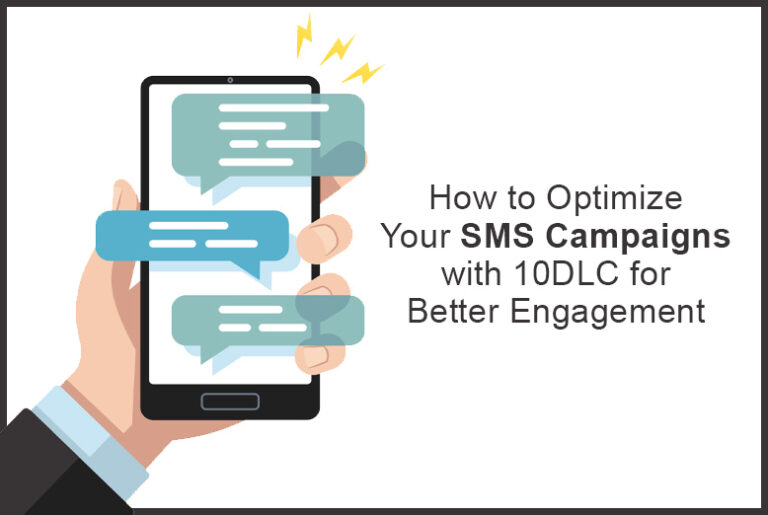Introduction
SMS marketing has become an essential tool for businesses looking to engage with customers in a direct and personal way. However, with growing regulations and carrier filtering, ensuring message deliverability and effectiveness has become more complex. The introduction of 10DLC (10-digit long code) registration provides businesses with a compliant and reliable way to send text messages at scale while improving engagement rates.
By optimizing SMS campaigns with 10DLC, businesses can enhance message deliverability, build brand trust, and drive higher response rates. In this article, we will explore strategies to maximize the impact of SMS marketing using 10DLC.
Understanding 10DLC and Its Benefits
10DLC is a messaging standard established by mobile carriers to regulate business texting on local 10-digit phone numbers. Unlike traditional long codes, which were often flagged for spam, 10DLC numbers offer businesses higher throughput, improved message delivery, and enhanced compliance. Registering for 10DLC ensures that messages are not blocked or filtered, leading to more reliable customer communication.
Businesses that use 10DLC benefit from increased trust and transparency, as customers can recognize and associate the number with a legitimate company. Leveraging 10DLC not only improves engagement rates but also protects businesses from unnecessary fines and message restrictions.
Crafting Compelling and Compliant SMS Messages
Once a business has registered for 10DLC, the next step is to create SMS messages that capture attention and encourage customer interaction. To optimize engagement, messages should be clear, concise, and personalized. Customers are more likely to respond to texts that feel relevant to their needs, so including their name or referencing past interactions can enhance the message’s impact.
Additionally, businesses must comply with SMS marketing regulations by obtaining explicit customer consent and providing an easy opt-out option. Keeping messages brief but informative and including a strong call to action (CTA) ensures that recipients understand the purpose of the text and are encouraged to take the next step.
Timing and Frequency: Finding the Right Balance
The success of an SMS campaign often depends on when and how often messages are sent. Sending texts at the wrong time—such as too early in the morning or late at night—can result in customer frustration and higher opt-out rates. Research suggests that messages sent during business hours, particularly between 10 AM and 7 PM, tend to perform best.
Frequency is another crucial factor; bombarding customers with too many messages can lead to disengagement, while sending too few can cause the audience to forget about the brand. A well-structured campaign should test different sending schedules and analyze response data to find the optimal balance between engagement and customer satisfaction.
Using Automation and Personalization to Enhance Engagement
Automation tools make it easier for businesses to send timely and relevant messages without manual effort. SMS automation allows companies to trigger messages based on customer actions, such as appointment reminders, order confirmations, and abandoned cart follow-ups. When combined with personalization, automation can significantly improve engagement rates by delivering messages tailored to each customer’s preferences and behaviors.
For example, a retail store can send exclusive discount codes to frequent shoppers or recommend products based on past purchases. The combination of automation and personalization ensures that SMS campaigns feel more natural and customer-focused rather than generic and intrusive.
Monitoring Performance and Optimizing for Better Results
A successful SMS campaign does not stop at message delivery; continuous monitoring and optimization are key to long-term success. Businesses should track key performance metrics such as open rates, click-through rates, conversion rates, and opt-out rates to measure campaign effectiveness.
Analyzing this data can help identify what messaging strategies work best and where adjustments are needed. A/B testing different message formats, CTAs, and timing can provide valuable insights into customer preferences and behaviors. By consistently refining messaging strategies based on data-driven decisions, businesses can maximize engagement and ensure a high return on investment for their SMS campaigns.
Conclusion
Optimizing SMS campaigns with 10DLC is essential for businesses looking to improve engagement, ensure message deliverability, and maintain compliance with carrier regulations. By understanding the benefits of 10DLC, crafting compelling messages, and carefully timing communications, businesses can significantly enhance their SMS marketing efforts. Additionally, leveraging automation and personalization creates a more dynamic and customer-centric approach to messaging. Continuous monitoring and optimization ensure that campaigns remain effective and adaptable to changing customer preferences. With a strategic approach to SMS marketing, businesses can build stronger customer relationships, increase conversions, and drive long-term success.



